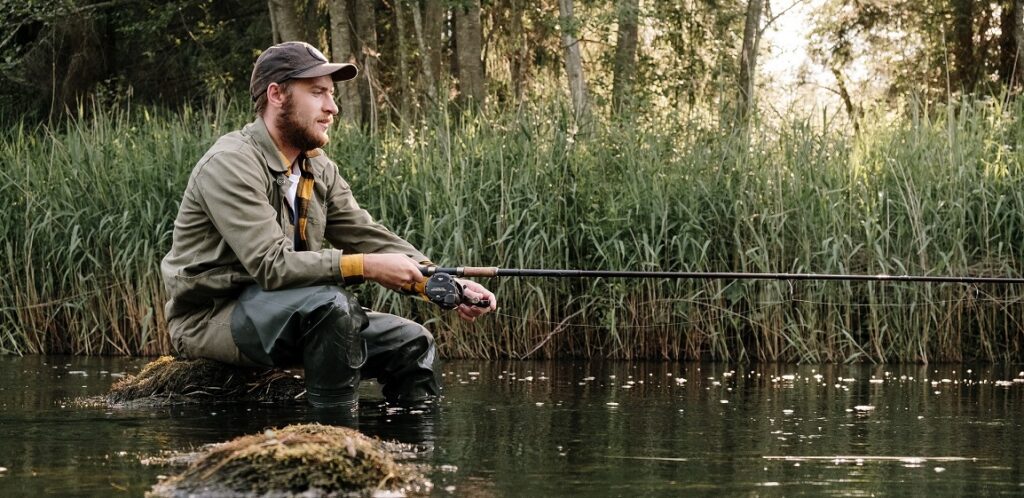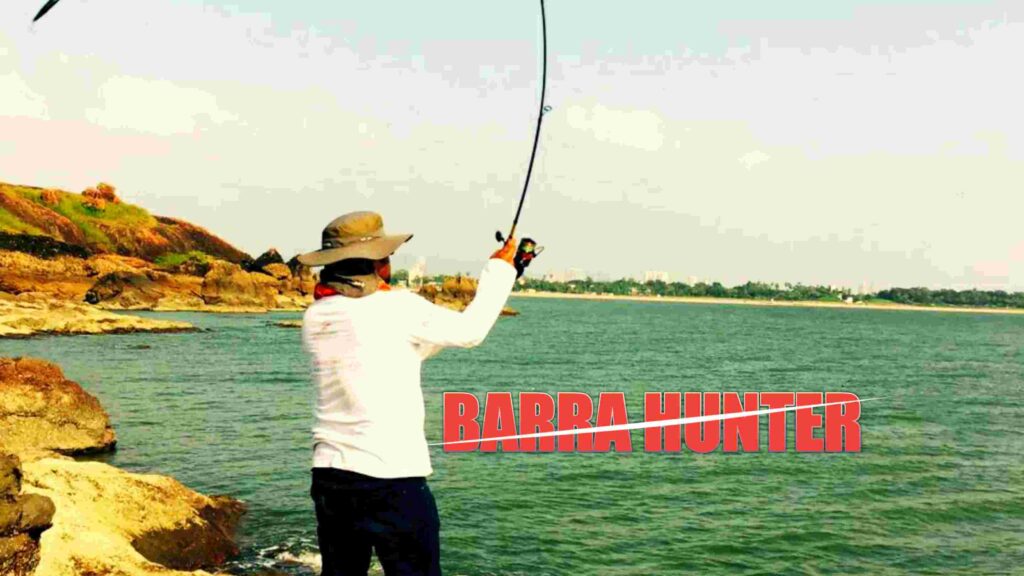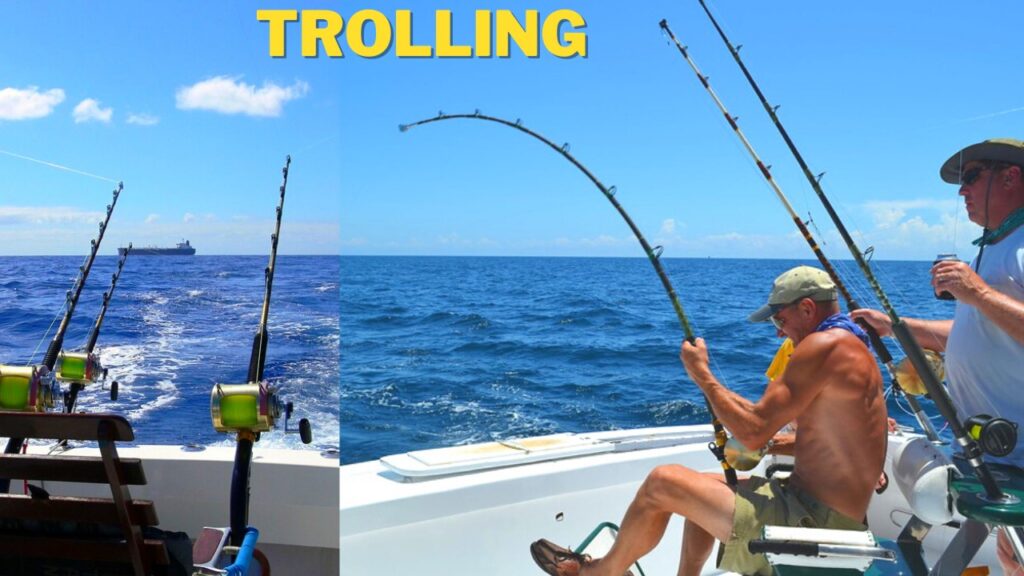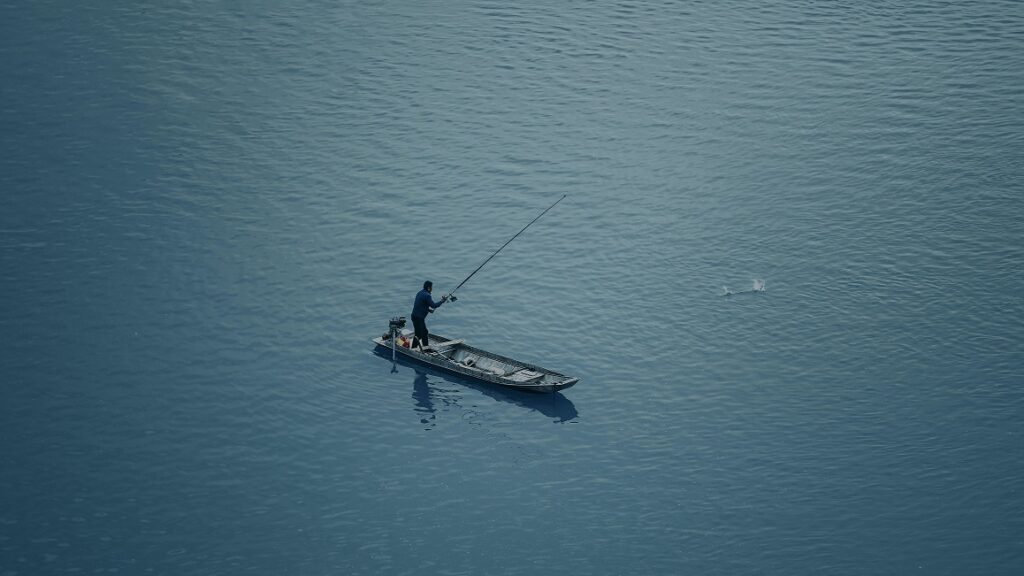Fishing is not a difficult activity for beginners. They simply need to be familiar with the fundamentals of fishing. Beginners Guide to Fishing will guide you across your fishing journey. You just need to follow this website and enjoy your fishing journey.
A Guide to Fishing for the First Timer
Fishing is a popular sport and industry that involves catching fish or other aquatic animals using a variety of techniques. It can be done as a kind of food procurement as well as recreation. Humans have engaged in fishing for thousands of years, and it has been a significant part of numerous civilizations and societies throughout history.
The type of fish being caught and the environment in which the fishing is taking place has a big impact on the fishing techniques used. Utilizing a rod and reel, using nets, and laying traps are a few typical fishing techniques. Simple hand-held lines to intricate systems of rods, reels, and electronics can all be employed as fishing gear.
In a variety of bodies of water, including the sea, lakes, rivers, and streams, fishing is possible. Fishing techniques may be required since different varieties of fish can be found in various situations.
Snakehead, Wallago attu, Mahseer, carp, pike, perch, catfish, bass, trout, musky, and many other common freshwater fish species are just a few examples.
Fishing offers people the chance to spend time in nature, take in the outdoors, and connect with friends and family in addition to the actual act of catching fish. Fishing can be a rewarding and pleasurable sport, regardless of your level of experience.
What do I need to go fishing for the first time? and other fishing-related queries will all be answered in this article. Steps on how to catch a fish? how to use a fishing rod to catch fish? How may fish be caught in the sea? how to use a hook to catch fish? and plenty of others.

Checklist for Fishing in Freshwater Fishing
| 1) Approval | Fishing License from Concerned authority (If Applicable) |
| 2) Gears | Set of Fishing Rod and Fishing reel |
| 3) Lines | 5 to 20 LB (pound) Monofilament Fishing Line of a good brand |
| 4) Sinkers | Collection of sinkers (small size to medium size) |
| 5) Hooks | Collection of Hooks (Size 2 to 5/0) J hooks. |
| 6) Bobber (Float) | A plastic bobber or cork bobber or Peacock Feather Float anyone will do |
| 7) Bait / Lure | A selection of live or Daed bait or small fishing lures (spinners, spoons,frogs) |
Beginners Guide to Fishing Types
1) Freshwater Fishing: Fishing in rivers, lakes, and streams for species like bass, trout, catfish, and panfish is known as freshwater fishing.
2) Saltwater Fishing: Fishing for species like tuna, marlin, redfish, and snook in the ocean, bays, and estuaries is known as saltwater fishing.
3) Fly Fishing: Fly fishing is a type of freshwater fishing that mimics the movements of insects and other prey by utilizing a light rod, reel, line, and artificial flies.
4) Spinnig: A spinning rod, reel, and lure are used in this form of fishing to mimic the movements of small fish, frogs, and other animals.
5) Baitcasting: Baitcasting is a type of fishing where larger species like bass, pike, and many others are targeted utilizing a baitcasting rod, reel, and baits.
6) Ice Fishing: Winter sport known as “ice fishing” which involves catching fish through holes dug into the ice.
7) Trawling: Trawling is a type of commercial fishing that entails dragging a huge net through the ocean to capture a wide range of animals, such as cod, shrimp, and squid.
8) Trolling: Trolling is a type of fishing whereby lures are pulled behind trolling fishing rods, reels, and reels in an effort to attract a variety of fish.
9) Gillnet Fishing: Gillnetting is a type of commercial fishing that includes dangling a long net above the water and entangling fish in the mesh to catch them.
10) Spear Fishing: is a type of fishing that involves diving and catching fish, octopuses, and other species with a spear or other similar tool.
11) Popping: Popping is a type of fishing where fish are caught utilizing spinning reels, popping lures, and popping fishing rods.
12) Kite Fishing: Fishing using a kite entails carrying a bait or lure to an area where fish are known to congregate. This method of fishing is known as kite fishing.
13) Jigging: Jigging is a type of fishing that uses a metal jig, a jigging rod, and a jigging reel to catch a variety of fish.
14) Carp fishing: Carp is a species of freshwater fish that is found around the world. Carp fishing entails catching the fish. Sports anglers frequently target carp because of their propensity for aggressive fighting.
These are a few forms of fishing’s numerous variations. The species you wish to catch, the equipment you have in your tackle collection, and your personal tastes will all influence the type of fishing you engage in.
For detailed information on each of these fishing types, please follow the blog.
Freshwater Fishing

Beginners Guide to Freshwater Fishing. Fishing in freshwater bodies, such as lakes, rivers, streams, dams, and ponds, is known as freshwater fishing. Snakehead, Wallago-Attu, Mahseer, Goonch, Carp fish, bass, trout, catfish, crappie, and panfish are a few common freshwater fish species. In freshwater fishing, a variety of methods are employed, including:
- Spinning
- Baitcasting
- Fly fishing
- Jigging
- Trolling
- Bait fishing
- Noodling
- Carp fishing
Each method has its own advantages and disadvantages and the choice of method depends on the species of fish being targeted, the angler’s personal preferences and skill level, and the conditions of the water body being fished. Additionally, different types of freshwater fishing gear, such as rods, reels, lines, and lures, are used depending on the fishing technique being employed.
Fishing Hooks for Freshwater Fishing
Basically, there are many types of Fishing hooks used for freshwater fishing depending on the type of fishing we do.
As for freshwater fishing if you do basic float fishing then you require basic J hooks of small sizes. But in the case of Carp fishing, you need to use a feeder rig where hook sizes are small but of very good quality and specific types of sharp small hooks. So let’s check out individual sets of hooks used for this types of fishing.

Basic Float Fishing Hooks
Saltwater Fishing

Fishing in saltwater bodies like oceans, bays, and backwater, is referred to as saltwater fishing. In Saltwater fishing we mostly target tuna, marlin, sailfish, snapper, grouper, Trevally Sail Fish, Dorado, redfish many more are just a few of the many fishing while saltwater fishing. Among the most popular methods for saltwater fishing are:
- Spinning
- Trolling
- Jigging
- Popping
- Dead Bait fishing –
- Surf Fishing
- Fly Fishing
- Kayak Fishing
- Offshore Fishing
- Chunking
Each method has its own advantages and disadvantages, and the choice of method depends on the species of fish being targeted the angler’s personal preferences and skill level, and the conditions of the water body being fished. Additionally, different types of saltwater fishing gear, such as rods, reels, lines, and lures, are used depending on the fishing technique being employed. Check out some most commonly used fishing types in detail.
Spinning

The spinning Fishing method requires a spinning rod and reel for catching fish in both Freshwater and Saltwater. The fishing rod is used to cast the fishing line, which is stored on the spinning reel spool. Once fish takes a Lure or Bait and gets hooked then it’s pulled by a spinning rod.
Mangrove Jack, Grouper, Barramundi, GT – Giant Trevally, Tuna, Marlin, Sailfish, Sting Ray, Shark, Barracuda, Pike, Aligator Gar, Perch, salmon, bass, catfish, Snakehead, Wallago attu, Mahseer, carp, pike, perch, catfish, bass, trout, musky, and many other species are among the saltwater and freshwater species that can be targeted in this fishing method.
The basic components of a spinning fishing setup include a fishing rod, spinning reel, fishing line, and lures or baits. The fishing rod’s Length, power, and action depend on the fish we target. Similarly, for Spinning reel size, drag power, Gear Ratio, and fishing line (including monofilament, fluorocarbon, and braided lines ) depend on the fish we target.
Numerous benefits of spinning fishing include its adaptability, simplicity, and capacity for long casts. The spinning reel’s easy line retrieval capabilities make it a popular option for fishing in swiftly moving water, and the abundance of lures and baits available allows fishermen to target a wide range of species.
Trolling

Trolling fishing is a type of freshwater or saltwater fishing that involves towing one or more fishing Lures attached to the line behind a moving boat. The fishing lines, which can be either baited or attached to trolling lure, are trailed behind the boat at different depths and speeds, allowing the angler to cover a large area of the water body and target a variety of fish species.
Salmon, lake trout, striped bass, walleye, Mahseer, snakehead, mulley, and many other freshwater and saltwater species, including Mangrove Jack, Grouper, Barramundi, GT – Giant Trevally, Tuna, Marlin, and Sailfish Mackerel, are commonly caught using the trolling technique. To target particular species and environmental factors, anglers can alter the boat’s speed and direction as well as the depth and speed of the trolling lines. A boat, trolling rods, reels, lines, and a selection of lures and baits are the standard components of trolling fishing equipment.
In order to control the depth of the trolling lines, downriggers, which are specialist equipment, are frequently used in trolling fishing. With the fishing lines maintained at a fixed depth even while the boat is moving, the fisherman can target particular water depths. Sonar and other fishing electronics are sometimes used by fishermen to aid in locating and pursuing fish.
In order to control the depth of the trolling lines, downriggers, which are specialist equipment, are frequently used in trolling fishing. With the fishing lines maintained at a fixed depth even while the boat is moving, the fisherman can target particular water depths. Sonar and other fishing electronics are sometimes used by fishermen to aid in locating and pursuing fish.
Popping

Popping fishing is a style of fishing most often used in saltwater fishing but can also be used in freshwater fishing. This involves using a special type of topwater lure, known as a popping lure, Popping Lure is designed to make a popping sound when it strikes the surface of the water.
The basic idea behind popping is to mimic the sound of prey splashing and struggling on the water surface, which can attract predators such as Bass, Tarpon, Tuna, Trevally, Barramundi, and many more.
Jigging

Jigging is a most practiced fishing technique that involves using a weighted lure, known as a jig, to imitate the movements of a baitfish. Jigs are made up of metal or lead, with a hook on one end and a tail made up of feathers or synthetic materials on the other.
While fishing with a jig, the angler casts a lure in the deep water and then retrieves it by giving jerking action, making the jig move up and down through the water. The idea is to mimic the movement of a wounded or dying baitfish, which attracts predator fish very fast.
Jigging can be done in both saltwater and freshwater environments and can be used to target a wide variety of fish species residing deep in the water body.
There are different types of jigging methods that anglers can use. Vertical jigging and pitch jigging(or horizontal jigging). Vertical jigging involves dropping the jig straight down to the bottom and then rapidly jerking it up and down, while pitch jigging involves casting the jig out and then slowly retrieving it with short, twitchy movements.
When selecting a jig for fishing, it’s important to consider the size, color, action, and weight of the jig, as well as the type of fish we target. Jigs come in a wide variety of shapes and colors, and some are designed to mimic specific types of baitfish or other prey. Anglers can experiment with different jig types and techniques to find what works best for their fishing spot.

